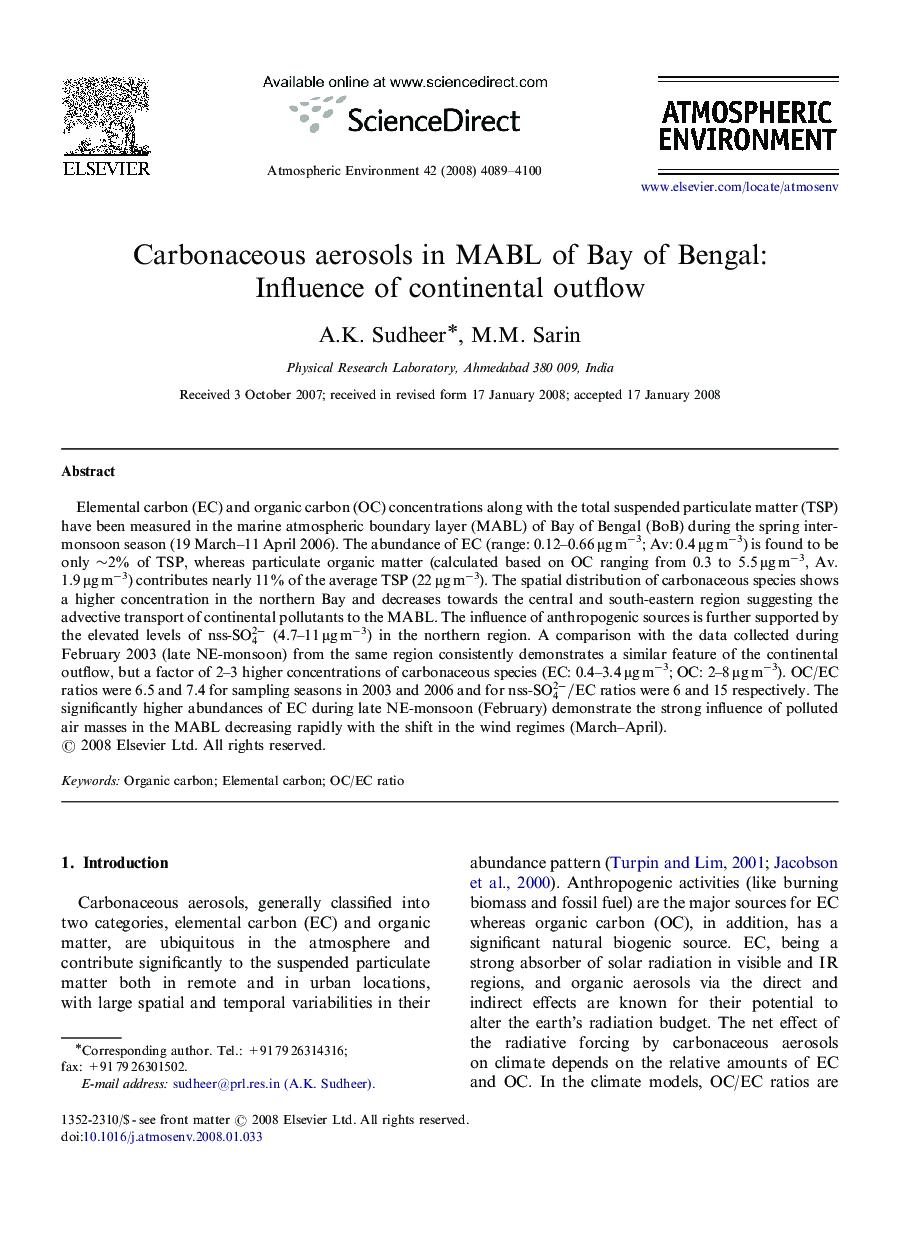| Article ID | Journal | Published Year | Pages | File Type |
|---|---|---|---|---|
| 4442904 | Atmospheric Environment | 2008 | 12 Pages |
Elemental carbon (EC) and organic carbon (OC) concentrations along with the total suspended particulate matter (TSP) have been measured in the marine atmospheric boundary layer (MABL) of Bay of Bengal (BoB) during the spring inter-monsoon season (19 March–11 April 2006). The abundance of EC (range: 0.12–0.66 μg m−3; Av: 0.4 μg m−3) is found to be only ∼2% of TSP, whereas particulate organic matter (calculated based on OC ranging from 0.3 to 5.5 μg m−3, Av. 1.9 μg m−3) contributes nearly 11% of the average TSP (22 μg m−3). The spatial distribution of carbonaceous species shows a higher concentration in the northern Bay and decreases towards the central and south-eastern region suggesting the advective transport of continental pollutants to the MABL. The influence of anthropogenic sources is further supported by the elevated levels of nss-SO42- (4.7–11 μg m−3) in the northern region. A comparison with the data collected during February 2003 (late NE-monsoon) from the same region consistently demonstrates a similar feature of the continental outflow, but a factor of 2–3 higher concentrations of carbonaceous species (EC: 0.4–3.4 μg m−3; OC: 2–8 μg m−3). OC/EC ratios were 6.5 and 7.4 for sampling seasons in 2003 and 2006 and for nss-SO42-/EC ratios were 6 and 15 respectively. The significantly higher abundances of EC during late NE-monsoon (February) demonstrate the strong influence of polluted air masses in the MABL decreasing rapidly with the shift in the wind regimes (March–April).
